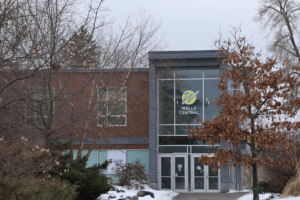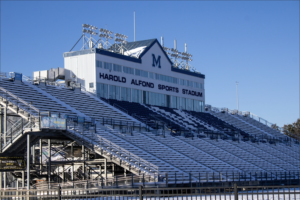The UMaine community, as large and growing as it is, has the potential to do incredible feats of charity. We are thousands strong, yet participation in charitable campus events hasn’t been at peak attendance. Recently, the annual Relay for Life, sponsored by the American Cancer Society (ACS), fell short of its $20,000 goal. The donations collected are destined for large and small scale cancer research and care needs — a more than worthy cause.
The Relay for Life is an intense event, meant to run anywhere from six to 24 hours with non-stop lap walking taken in turns by event-goers. Laps around the track have themes — some fun, like a karaoke lap and others much heavier, memorializing loved ones lost in a cancer battle. The Relay for Life is meant to be exhausting as a symbol for the battle cancer patients must fight, day and night. The ACS writes on their event page, “Cancer patients don’t stop because they’re tired, and for one night, neither do we.”
The emotional burden of ongoing charity efforts can’t be swept under the rug. It can be tiresome to focus efforts year after year, but the hard truth about cancer is its strong, pervasive influence throughout the country. Cancer research is constantly improving current treatment and therapy methods, detection and genetic testing. Beyond the larger movements in the medical community, there is always someone out there struggling in a nearby community who needs donations to receive critical patient care services. Though it’s disheartening to hear the same pleas each year, we are moving toward an ultimate end goal of eradicating these life-threatening diseases.
Declining participation isn’t necessarily a symptom of laziness or disinterest. Often, students hear about events only after the fact. Advertising for charity events on campus, as well as smaller club or intramural meetings, is split onto several platforms. UMaine students have FirstClass announcements, Facebook class groups and organization pages, in-person fliers and word of mouth to rely on.
Even when events are cycled through most of these sources, there’s still a good chance of missing them. Word of mouth requires connections and concrete details. FirstClass announcements are often disorganized — not to mention this server will soon retire. UMaine students don’t unanimously use Facebook pages.
If we want to use our campus size to its full potential, there needs to be a single, established platform or better coverage over multiple systems — with plenty of time for people to adjust schedules. Then participation boils down to each individual. The Relay for Life is only one example and a harder one for many students. A 12-hour event is more difficult to fit into many, varied schedules than a one or two-hour event. And there should be no harm in widening an online donation pool or mail-in options, for those who really cannot make it in person.
Even when students do hear about an event in time, it is often given lower priority than other things in their schedules. This is largely a fair move. School, work and other essential activities should take precedence, but charity is still a significant cause worthy of squeezing in. Smaller events may span only a couple hours. A small donation is even simpler to fit in — a couple minutes to send a bank transfer, or put some cash in an envelope.
Taking the time and effort to help some causes, especially in these tumultuous times, will do good on so many levels. It will make the individual feel great, help the charity of their choosing and support those affected, whether it be cancer, the war crisis or any other movement. Spending time on our community is vital as we move forward as a campus and nation.



